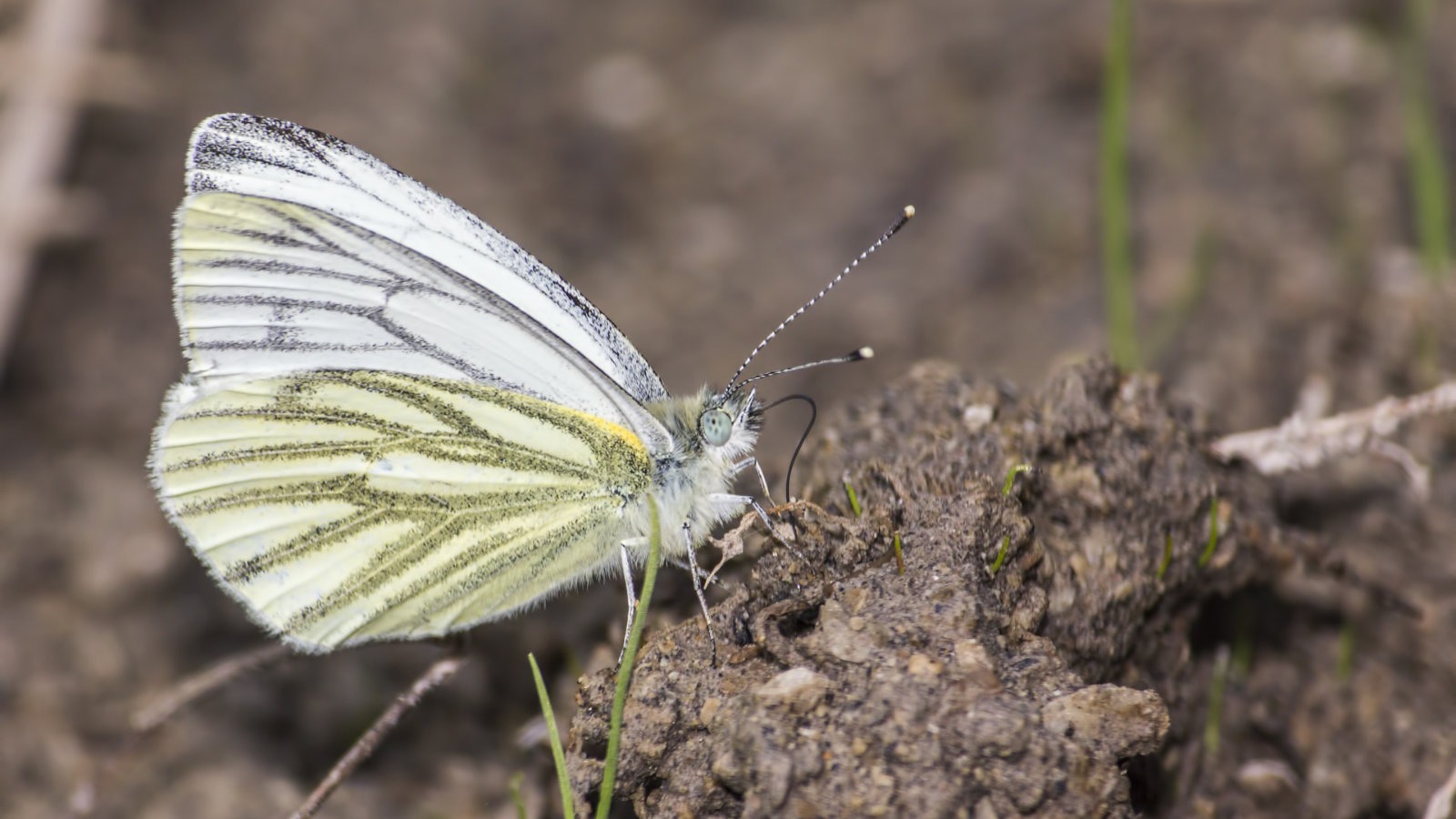The cousin of the Small White, this butterfly has a black body and white wings with dull black markings on the wingtips. The green, vein-like markings on its under wings help to distinguish it from similar ‘White’ species. Females look like males, though some distinction can be made with the females usually having darker and larger black spots on their upper wings.
Larvae: The larvae are a leaf green colour and have small hairs which cover their bodies.
Latin name: Pieris napi
Size: 40-52mm

Overview
This is one of the most successful and widespread butterflies in Britain and can be seen in all number if habitats. Adults love damp, sheltered areas but are very adaptable and can be attracted to all environments with bluebells or buttercups. They can also be seen basking on muddy flats where they will feed on the moist, nutrient rich mud. Larvae will grow and develop on plants such as cuckooflower and get a head-start in life by devouring their egg-casing on hatching. The butterfly has a relatively short summer on the wing but can be seen between April and September. Many variations populate the UK with 3 subspecies and many aberrations making up their numbers.
In the garden
The Green-veined White is very common and is easily attracted to gardens with lush vegetation to provide damp areas for the butterfly to shelter and good nectar sources for food.
An interesting fact
The apparent green veins on the underside of their wings are not this at all, but rather a combination of small yellow and black scales which, at a distance, give the illusion of veins filled with green blood.